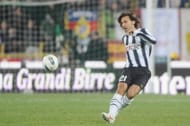Parts 1 and 2 of this series can be found here and here.
Much like everything else in this world, football is ever changing and sometimes these changes happen in cycles. During his final years as a player, Pep Guardiola was considered an unwanted asset in world football. This is not to say he had no talent, just that the football world had moved on. A fine player with good vision and passing skills, Guardiola sat in front of the defense passing the ball to his more exciting colleagues. But with the need for tough tackling midfielders and classic creative midfielders (or number 10′s) dominating the trend at that time, his skills had become obsolete in football.
Guardiola himself said, “The tactics are different now, you have to be a ball-winner, a tackler, like Patrick Vieira or Edgar Davids. If you can pass too, well, that’s a bonus. But the emphasis, as far as central midfielders are concerned, is all on defensive work…players like me have become extinct.”
Little did he know how wrong he was.
Much like a lot of the tactical changes in recent years, the resurgence of the Guardiola-type players can be attributed to the change in formations from 4-4-2 to 4-3-3, 4-2-3-1 or other such variations.
With the 4-4-2 formation, the central midfield consisted of, traditionally, a tough tackling midfielder and a creative midfielder or trequartista (who was obviously the most dangerous and influential player on the field) playing in tandem, with the former making up for the latter’s defensive frailties. In this system, the midfielder was more important in defense and his passing skills, if any, were considered a bonus rather than a necessity. This lead to a fall from grace for the passing midfielders.
But with the shift in formation to 4-3-3, the opposition team could now curb the danger of the ‘number 10’ with the help of the additional defensive midfielder closely marking the number 10 and preventing him from controlling the game. This new role is what came to be called as the ‘Makelele role’ after one of the earliest and, arguably, the best midfielder ever to play in this role – Claude Makelele. As opposed to a traditional 4-4-2 (which was highly popular at the time), where the two central midfielders are side by side, in a 4-3-3 formation, there are three midfielders playing in a triangle, so they already have an advantage in numbers. With this advantage, they force the wide players of the opposition team to come inside to provide support to their central midfielders, thus freeing the flanks for their own wingers and fullbacks to exploit during counter attacks.
Since 4-3-3 and its variations (4-2-3-1 being the most popular) employ a 3 man midfield, there is still place for another midfielder in addition to the ones playing as the creative player and the one in the Makelele role. This place was filled by the passing midfielder. When the defender or the defensive midfielder wins the ball, the passing midfielder acts as a link between defense and attack by playing the 10-15 yard passes to the creative midfielders or wide players, thus initiating the attack all the while providing defensive support.
With more and more teams shifting to 4-3-3 variations, it became common for the defensive midfielder to mark the creative midfielder of the other team and hence curbing their major attacking threat. Players like Zidane, Riquelme and Totti, who play the traditional number 10 role, were now very tightly marked.
With the declining influence of the ‘number 10′s’ who were frequently marked out by the player in the defensive midfielder role (or Makelele role), it became a necessity to find creativity from further down the field and the passing midfielder made way for the deep lying playmaker. The players in this position usually have good vision, composure, awareness and a wide passing range capable of converting defense to attack in one pass. Since they are positioned just in front of the defense, they further add to the defensive stability of the team. The deep lying playmaker has since become a pivotal part of modern football and the most essential cog of the counter attacking system.
Perhaps the best example of a deep lying playmaker is Andrea Pirlo, who was a creative attacking midfielder in his formative years. He formed a formidable partnership with Kaka and Gattuso at the heart of the Champions league winning AC Milan side. While there have been other similar partnerships like Gerrard, Alonso and Mascherano at Liverpool or Ozil, Alonso and Khedira at Real Madrid, these three perhaps best embody the roles of the 3 midfielders in the 4-3-3 formation with Kaka playing as the elusive and creative midfielder with quick feet, Gattuso as the bruising, hard tackling holding midfielder and Pirlo as the midfield general who quietly runs the show.
In recent years, Barcelona, like they usually do, have further tweaked the defensive midfielder role to fit their playing style. With the midfield three consisting of Xavi, Iniesta/Fabregas and Sergio Busquets, their holding player (Sergio Busquets) has moved away from being a tackler to a passer. With Barcelona playing possession football and having more than 50% of the ball, they require a player more adept at passing and keeping possession ticking over rather than tackling. Manchester United also have a player who plays a similar role in their team – the criminally underrated Michael Carrick, who is instrumental in their game plan.
Despite the words of Guardiola almost over a decade ago, it seems skill and passing ability have not given way to brute strength and physicality. Whether you call him a deep lying playmaker or a regista, the evolution of the passing midfielder has come full circle.


